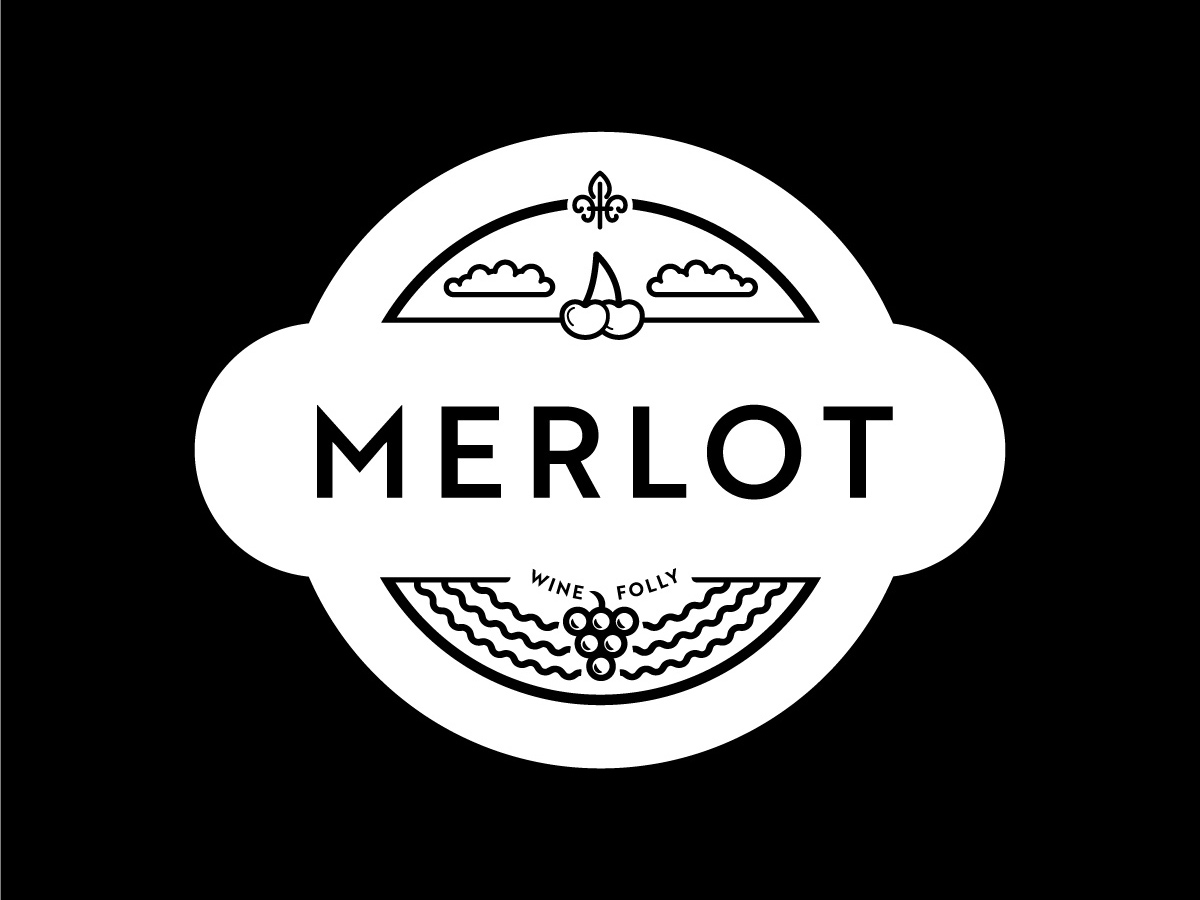The merlot grape
Merlot is one the most used grapes in the world. This grape can exist in many different combinations and climates. Below we will dive into why this is the case.
Merlot is so populair because of its red(cherry)/dark tones, chocolate after taste and easy tanins. In the higher price range, it’s often mistaken with Cabernet Sauvignon, this is because it often blended with Cabernet Sauvignon. You could call the second grape of the Bordeaux. He had long been the neglected brother of Cabernet Sauvignon. Many winemakers outside of Bordeaux paid little attention to merlot. They found that the wine lacked body and strength, but wine drinkers appreciated the juicy cherry flavor and the uncomplicated, creamy character. Now the grape, like carbernet sauvignon, is planted all over the world and seeds more wines are made from only merlot
Primary Flavors
- Cherry
- Plum
- Chocolate
- Bay Leaf
- Vanilla
Taste Profile
Handling
- SERVE 60–68°F / 15-20°C
- GLASS TYPE Oversized
- DECANT 30 Minutes
- CELLAR 10+ Years
Food Pairing
Merlot is a great wine to play with, as it matches with a wide variety of foods. Don’t be afraid to experiment!
For Tuesday night, easy drinking, entry-level Merlot: think pizza, bbq chicken or a penne boscaiola situation (think tomato sauce, creamy, bacony, mushroomy goodness). Keep it simple, easy meals work with easy wines.
For a Merlot-dominant blend (such as entry-level Bordeaux) that has earthy notes, as well as ripeness, think: roast turkey, beef short rib, or a rustic ratatouille! For braised meat pairings, try complementing Merlot’s boisterous fruit notes with chimichurri sauce.
Finally, for those full and lush new world styles, think rack of lamb, roast veal, or filet mignon with peppercorn red wine sauce… mmmmm.
Things to shy away from when pulling the cork on a Merlot would include delicate fish dishes, light salads, and super spicy things – save those chilis for a German Riesling!
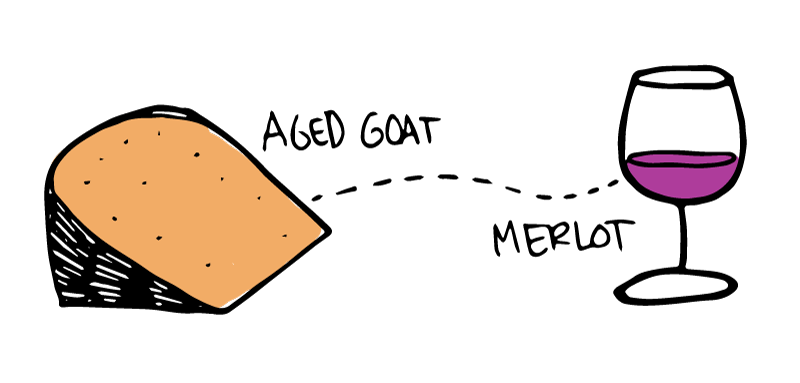
Fun Facts About Merlot Wine
- Merlot is the child of Cabernet Franc and the rare, Magdeleine Noire des Charentes. This makes Merlot a sibling of Cabernet Sauvignon!
- Merlot is the most planted wine grape in Bordeaux, France. It grows in the same climates as Cabernet Sauvignon, Cabernet Franc, Malbec, and Petit Verdot
- Merlot wine can be easily confused in a blind-tasting. That being said, let blue fruit flavors, softer tannin than Cabernet, and maybe a sultry mocha or chocolate note be your tell!
- The name “Merlot” roughly translates to little blackbird; possibly due to dark blue/black coloring, or those pesky little blackbirds that eat the grapes.
- The first time Merlot was ever mentioned was in 1783. They spelled it Merlau and said, “makes a black and excellent wine, productive in good soil.”
- The most expensive Merlot was sold at auction in 2011. a case of 1961 Pétrus went for a cool $144,000 USD – That’s $12,000 a bottle!
Poor Public Image from the 1990s
In the early nineties, Merlot suffered from a poor public image. In California, most were lush, soft, flabby, and borderline sweet (in a gross way). Then, when the movie, Sideways, came out in 2004, Merlot sales dropped almost 2% (while Pinot Noir sales increased 16% in the Western United States.)
If only people knew of the elegant and structured potential of this grape!
“Despite Merlot’s reputation as the user-friendly, early maturing wine, the best of these wines can continue to develop in bottle for decades.”

What To Expect in Merlot Wine
There’s more to Merlot than meets the eye… Take a look at the range of possibilities based on the region (warm climate vs. cool climate).
Tasting Warm Climate Merlot
From warmer climates, Merlot wine tends to be more fruity with refined, pin-cushion tannins. Because of the boldness of these wines, you’ll often find a they age in oak which adds vanilla, chocolate, and smoky cedar notes.
Classic examples of warm climate Merlot are from Napa Valley, Australia, or Argentina:
- Deep ruby blue colour.
- Dry, but with big fruit flavors. Remember, fruit doesn’t have to equal sweet.
- Think blackberry, blueberry, plum, and/or raspberry.
- Medium-plus to full body. Voluptuous, if you will.
- Purple floral notes towards the top of the glass. (Violet, you’re turning violet, Violet!)
- Pyrazines, or green notes, come across as leafy rather than peppery.
- Rich baking spices from oak aging… Vanilla, allspice, and cinnamon.
- Also chocolate. Coffee, mocha, madness!
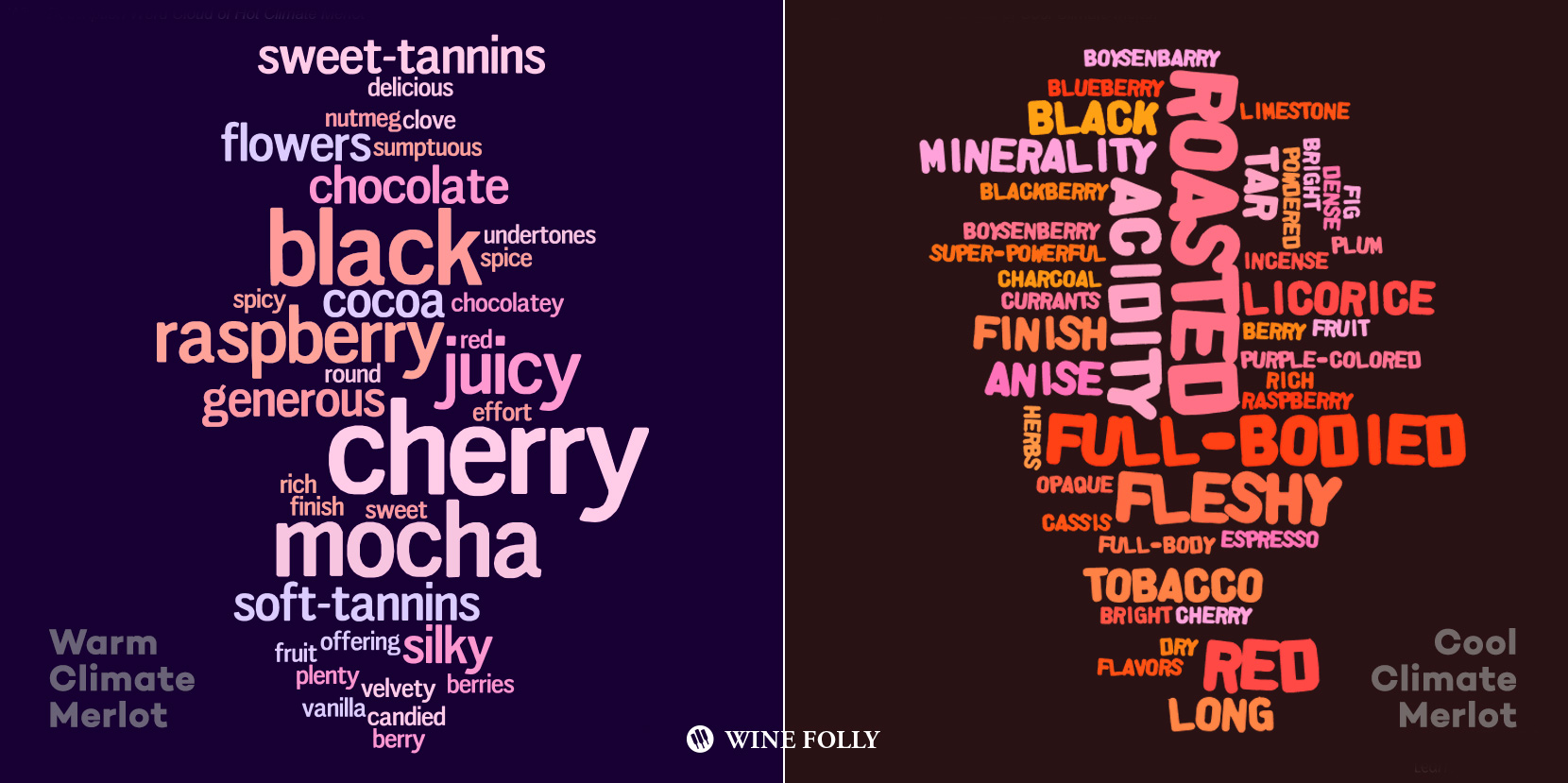
Tasting Cool Climate Merlot
These will be more structured, with earthy flavors. Cool climate Merlot is often mixed up with Cabernet Sauvignon when being tasted blind.
The classic example of cool climate Merlot wine is Right Bank Bordeaux, such as Saint-Émilion or Pomerol, as well as parts of Northern Italy and Chile.
- Ruby garnet colour.
- Ripe, or slightly tart fruit. Raspberry, cherry, plum, blackberry, blueberry, and fig.
- Purple floral notes, violet, iris. Tobacco leaf, bay leaf, mint.
- Licorice and anise.
- Mushroom, truffle, forest floor.
- Bitter chocolate, coffee, allspice.
- Generally more medium bodied.
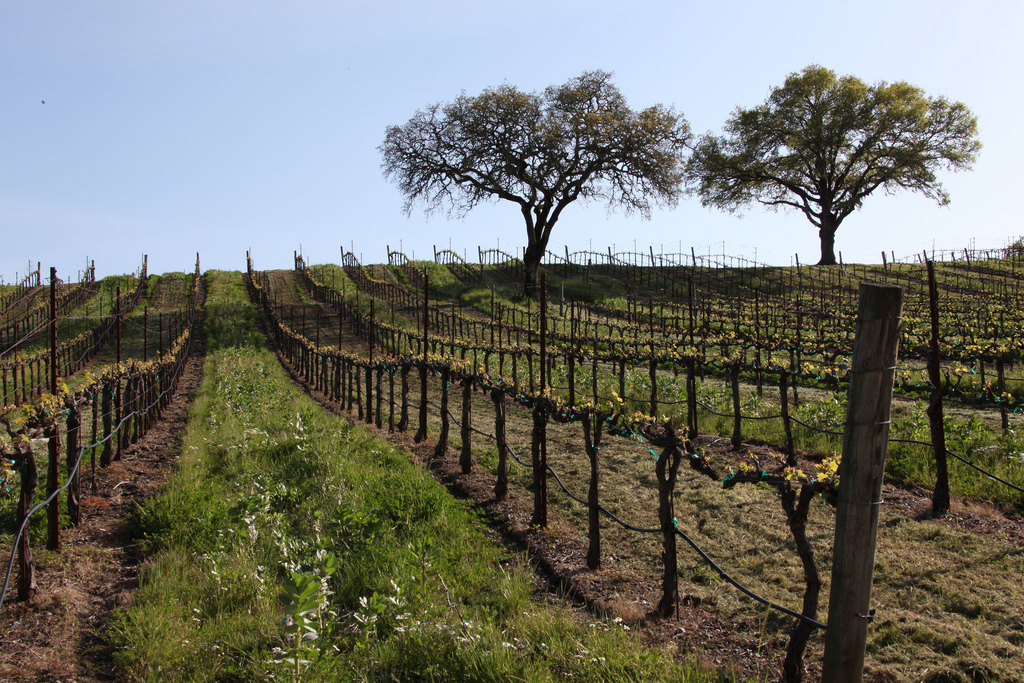
Merlot Wine Regions
Bordeaux
Truly at home in France, Merlot is generally made into generic appellation (or, on the higher end, Right Bank) blends. However, it is also widely grown throughout southern France, where it is often blended with grapes like Malbec.
Italy
In Italy, especially Tuscany, Merlot is a darling partner to grapes like (surprise!) Cabernet Sauvignon, (alongside Sangiovese) in a style of wine lovingly named “Super Tuscan.”
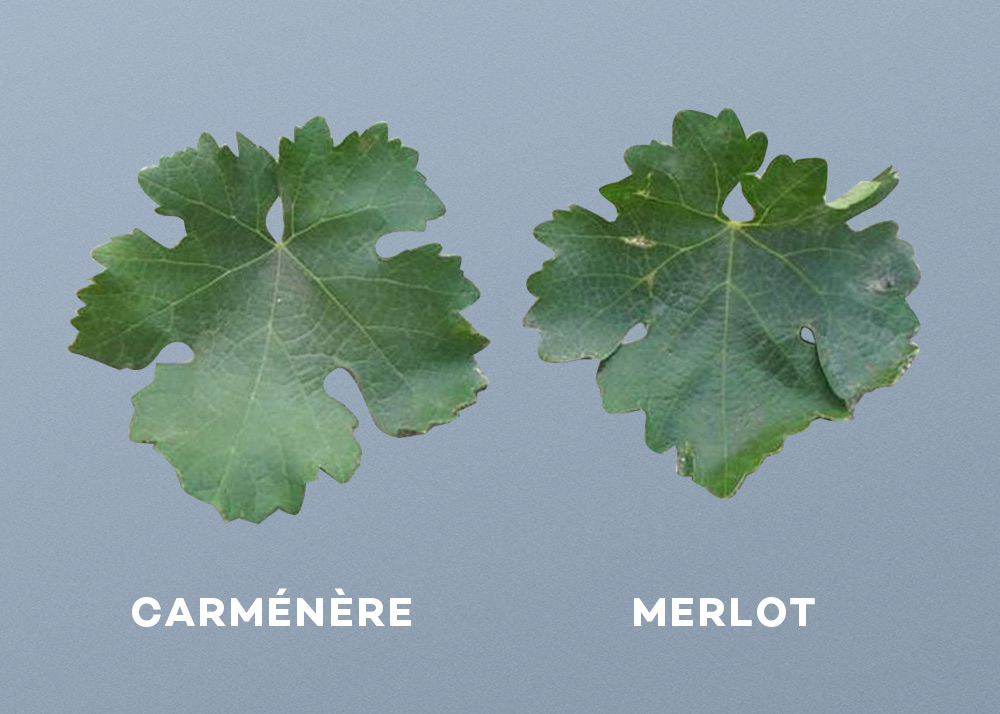
Chile
Chile is another perfect homeland for Merlot. The wines from here vary from easy-drinking and fruity bottlings of the Central Valley, to more structured and serious examples from Colchagua, Maule Valley, and Maipo.
- A fun fact on the history of its supposed origins here is that in the 1800s, cuttings thought to be Merlot were brought over from Bordeaux and planted in Chilean vineyards. However in 1994, a grape researcher named Jean Michel Boursiquot, realized that they were, in fact, an entirely different variety of vine! They were a grape known to us today as Carménère.
- Another interesting thing about Chilean wine is that thanks to the Andes Mountains, the country remains phylloxera free!
California & Washington
In the United States, Merlot is most well-known growing alongside Cabernet Sauvignon in the North Coast region (which contains Napa Valley and Sonoma). In the Central Coast, you’ll find many of the larger production wineries (although there are a few exceptions with great quality!)
What’s exciting with Merlot in the US is what’s happening in Washington’s Columbia Valley. The grape performs very well growing on the dry, eastern side of the state where nighttime temperatures drop substantially and maintain precious acidity. Look to the regions of Horse Heaven Hills, Yakima Valley, and Walla Walla for quality.
China
In China, a relatively new wine region, comparatively globally speaking, Merlot is an up and coming star. Merlot is not yet achieving super-premium status, such as is Cabernet in the wine Ao Yun, but the future looks promising.

